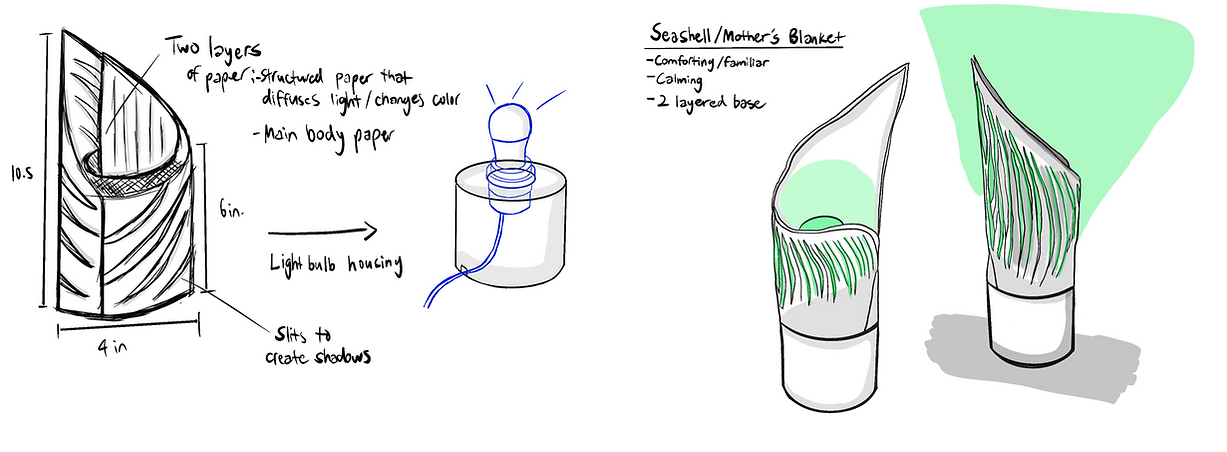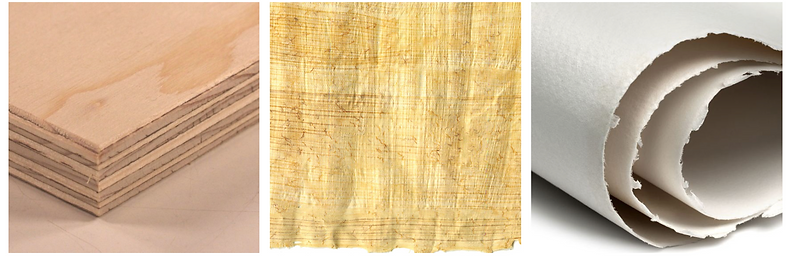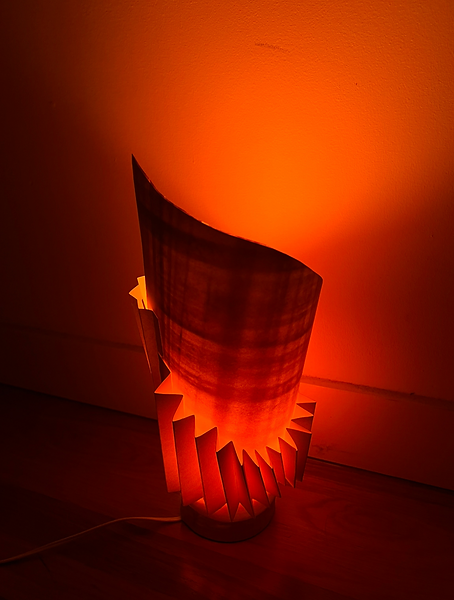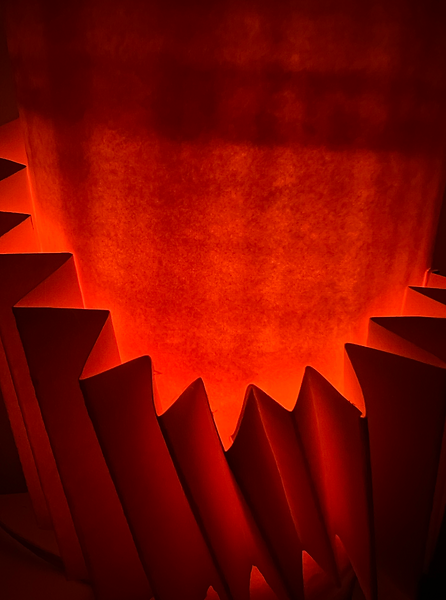
SHELLAMP/ Human Centric Lighting Design
The goal was to design an accent night light to help calm users down before sleep. The light could either be mounted on a night stand or be used as a floor lamp. The light provides a relaxing sense of security, through its familiar form, mesmerizing pattern and soothing color. The form takes an organic, delicate aesthetic with a touch of modernity.

The mood of this lamp is inspired by seashells, blankets, sunsets at the beach, lighthouses and all things warm, secure, and cozy.

(LEFT) BABADUL FLOOR LAMP WITH JAPANESE PAPER SHADE BY INGO MAURER
I was inspired by Maurer’s intricate form, his use of texture, and his attention to detail.
(MIDDLE) MENDORI “IN-EI” LAMP BY ISSEY MIYAKE FOR ARTEMIDE
The Mendori’s cylindrical shape highly influenced my design, as well as the material: In-Ei which has paper-like properties but is extremely durable and sustainable, as it is made out of recylcled PET plastic.
(RIGHT) TEMPO VIVACE PENDANT LIGHT BY ARTURO ALVAREZ
The creases and layering of the Tempo Vivace Pendant light compelled me to make specific design decisions.

FILIPINO CRAFTSMANSHIP INSPIRATION:
Filipino craftsmen and women are known for their skills in creating intricate designs with their hands only. Their heart and soul are visible the form and materiality of each and every design they produce. They manage to consistently maintain high standards while producing in high volume, despite having no machinery to aid them. This reflects Filipino values that include hardworkingness, determination, and resourcefulness adds a more personal touch to a design while its being created. These skills and values are things I extended and intergrated to my own design.



These sketches explore different forms and lighting concepts. In addition, they explore various lighting effects and visual representations.

The model-making process relayed the information for the final design. The paper models on the left explore the effects of light and shadows through patterned slits. The mid-fidelity models on the right explore different materials and their effect on light diffusion and color.


MAKING PROCESS
I first took my found plywood to the making center and cut the circles to the desired diameter. Then, I stacked the pieces and drilled a hole that fits the socket and wiring perfectly. After finishing the base, I proceeded to the paper forming, in which I cut, folded and slit the the material, and then finished the fixture with layers of papyrus to achieve the intended appearance.
Fabrication:

The plywood was used for the base of the lamp, which also houses the socket and wiring of the lightbulb. The papyrus was used for the inner layers of the shell, as it has good light diffusion properties and gives the light a warm orange hue. The stonehenge paper was used for the outer layer as well as the pleats that wrap around the form. This material was the best representation to communicate the concept of warmth and a welcoming mood.







